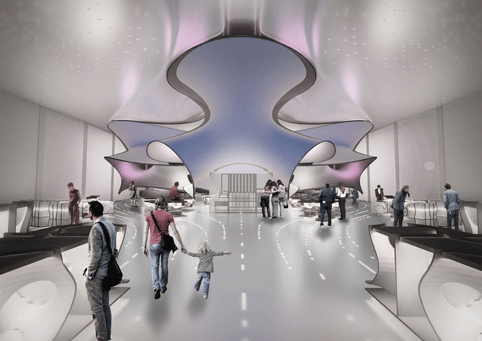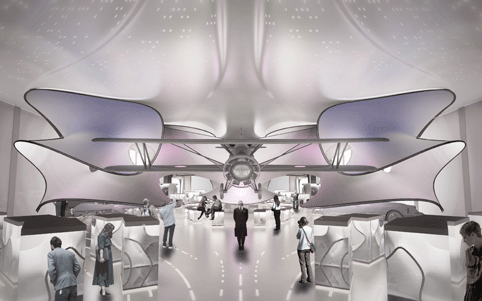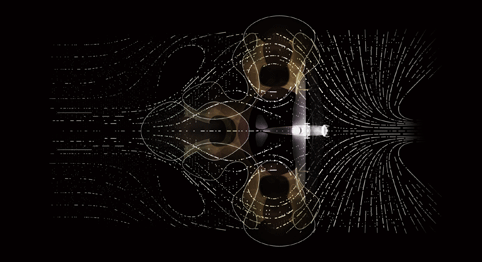Zaha Hadid designs Science Museum’s new maths gallery
A design by Zaha Hadid Architects has been chosen for the Science Museum’s new mathematics gallery, which features a suspended aircraft and sculptural impressions of its field of turbulence.

The new permanent gallery will show how mathematics is at ‘the heart of our lives’ and how mathematicians, their tools and ideas have shaped the world since the 17th century.
Theories of aerodynamics are intrinsic to the design of the gallery, which features a Handley Page Aircraft.

The 1929 Handley Page Aircraft was the winner of a $100,000 competition held by American philanthropist Daniel Guggenheim in 1927.
Guggenheim called on designers and engineers to create an aircraft that could take off and land slowly and steeply without stalling.
The Handley Page aircraft built on aerodynamic work from the First World War and was designed at a time when aircraft manufacturers demanded better understanding of the mathematics of aerodynamics and material stress.

The birds-eye-view plan of Zaha Hadid Architects’ design shows how every exhibit in the gallery falls into the aircraft’s imagined field of turbulence and forms an aerodynamic diagram.
Display cases follow the mathematical theme. Each is a variation of the same mathematical equation.
A £5m donation by the David and Claudia Harding Foundation – the biggest single donation the museum has ever received – has helped fund the project.

Zaha Hadid, who has a maths degree, says, ‘The design explores the many influences of mathematics in our everyday lives, transforming seemingly abstract mathematical concepts into an exciting interactive experience for visitors of all ages.’
The David and Claudia Harding Mathematics Gallery will open in 2016 and will be curated by David Rooney, who was behind the Codebreaker exhibition about the life of Alan Turing.

The gallery plans are part of the museum’s master-plan Museum of the Future, first announced in 2009, which was expected to be completed in 2015.
-
Post a comment




